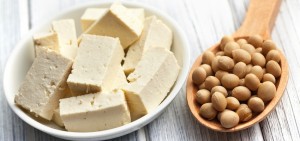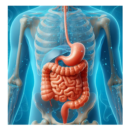Enjoy this article by Dr Amy Shah.
Personally I enjoy organic edamame once in a while and I choose wheat free organic Tamari instead of Soy Sauce ( first ingredient is wheat )
Dr Pia

Tackling the topic of soy is a little like trying to untangle my four year-old daughter’s hair. First, I feel overwhelmed just looking at the mess. And then, when I tackle it, more and more tangles keep appearing!
That’s why, for years, I avoided looking at all the data on soy.
Finally, folks, I did it for you. As a health professional, I get asked about soy a lot, as it’s one of the most common food allergens in the westernized world.
And it’s only gotten more confusing recently. A few years ago, soy manufacturers funded a PR push after some studies showed it helped ease some menopausal symptoms such as hot flashes. But then the pendulum swung the other way and soy became the scapegoat for almost everything under the sun, including cancer.
If you’re adopting a plant-based lifestyle, this is an even trickier topic, since you’re faced with soy in practically every product in the vegetarian section of your grocery store. It’s difficult to completely remove soy from your diet as it’s practically everywhere; you’d have to drastically move away from all mainstream food choices to avoid it completely.
But what is the real risk of moderate consumption? And why is there so much polarized information?
I’ve tried to boil it all down to the top 10 facts you need to know about soy:
1. Soy feed is the major ingredient in modern animal feed.
Along with corn, fat-free (defatted) soybean meal is a significant and inexpensive source of protein for animal feeds. Without soy, it would be impossible to raise farm animals (such as chicken, hog, turkey) on a large industrial scale. Did you know that the US produced over 90 million tons of soy in 2011, making it the largest soy producer in the world?
2. It’s estrogen-like.
Soy’s role as a natural hormone replacement was touted for many years because soy contains isoflavones, which are similar to estrogen. While isoflavones may act like estrogen, they can block the more potent natural estrogens from binding to the estrogen receptor. So, it’s much more complex than is usually presented in the media.
How does this affect kids? I am concerned about my son, who tends to like soy meat replacement products. How much is OK? A few experts on the subjects weighed in on this question and concluded that about two servings a day should be the upper limit of soy intake for boys and girls.
3. It may contribute to breast cancer.
This, to me, was the thorniest issue. Some articles supported the idea that soy contributes to breast cancer, but most of them studied soy consumption at extremely high levels. Also, many of them were animal studies. And most of them had the participants eat processed soy.
However, the Weston A. Price foundation made a nice summary page of all literature that supports soy and breast cancer. Quite a few sources say that soy does not correlate with an increase of risk of breast cancer and I found a good summary of it here.
4. Soy may affect your thyroid especially if you are already hypothyroid.
It’s now accepted, even by soy advocates, that people with hypothyroidism should avoid consuming more than 1 serving a day of soy.
Because soy is a goitrogen (meaning that it promotes the growth of a goiter), it can slow thyroid function, and sometimes, trigger thyroid disease if taken in large quantities. Also, children who drink soy formula tend to develop problems with their thyroid at a higher rate than other children.
5. Most soy is GMO.
In fact, 93% of all soy in the US is genetically modified. Also, in the US, there are no rules to separate GMO soy from non GMO fields of soy.
6. It is often highly processed.
Like wheat, part of the problem with soy is that it often presents itself in the processed form of snacks, cakes, and meat alternatives. In my practice, I find that cutting out soy and wheat from the diet is partially beneficial because it also means you cut out processed foods such as cakes, cookies and other junk food.
7. Soy is a complete protein.
Soybeans are a source of complete protein. They are considered as being almost equivalent in protein quality to animal proteins.
8. Soybean oil is processed with Hexane.
Most of the soy crop in the U.S. is used to produce soybean oil, and uses hexane (a chemical solvent) in its intial stages of extraction. If you choose organic soy products or unprocessed soy (like edamame)—you don’t have to worry about hexane use.
9. Soybean provide a large amount of protein with moderate amounts of fat.
This is a fact. 100g of soy contains 173 calories, with 9 grams of fat, 10 grams of carbs (6 of which are fiber) and 17 grams of protein.
10. Soy has been eaten in Asian countries for thousands of years.
Soy farming in China and East asia started in 1100 BC. The Japanese and Chinese eat 10 grams of soy protein per day (although some groups in these countries eat as much as 50 grams). Also much of the soy that is consumed is fermented, which makes it a healthier choice. But in America, many soy supplements and powders can have as much as 50 grams of soy protein in one serving.
Ok, so what’s the final verdict?
I’ll let you decide … but if I were you, I’d avoid consuming processed soy.
That said, having edamame at restaurant, or a couple of whole organic, non-GMO or fermented soy meals per week is fine for most people.
I know that everyone is entitled to his or her own opinion, but I wanted to present the facts as I see them so you can make an informed decision. What’s your stance on soy?











